#Lucidchart
Explore tagged Tumblr posts
Text
Introducción a la Programación Orientada a Objetos
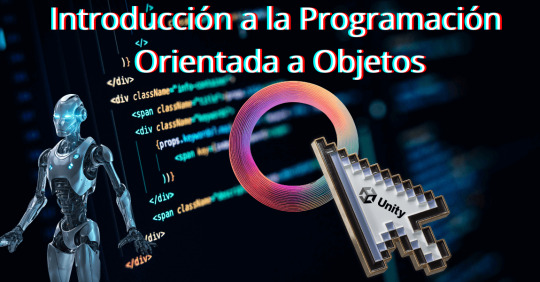
La programación orientada a objetos (POO) es un paradigma de programación que organiza el software en torno a objetos, que son estructuras que combinan datos y comportamiento. En la POO, los objetos representan entidades del mundo real o conceptos abstractos, encapsulando tanto sus propiedades (atributos) como sus acciones (métodos) en una sola unidad. Este enfoque facilita la creación de programas modulares, reutilizables y fáciles de mantener, ya que promueve principios como la herencia (para compartir y extender el comportamiento), el polimorfismo (para tratar objetos de diferentes tipos de manera uniforme) y la encapsulación (para proteger los datos internos del objeto). Unos de los desarrollados según su uso es mas facilitado para un mejor desempeño al momento de un diseño. La programación orientada a objetos (POO) y el diseño están estrechamente relacionados, ya que la POO facilita una estructura de diseño clara y modular en el software. Este paradigma permite dividir un sistema en objetos que representan partes del problema y que interactúan entre sí. Al estructurar el código de esta manera, la POO ayuda a crear aplicaciones más comprensibles y mantenibles, con piezas que pueden diseñarse y desarrollarse de manera independiente.

Con la POO, los principios de diseño orientado a objetos guían la creación de código de calidad. Por ejemplo, los principios SOLID son un conjunto de buenas prácticas que ayudan a organizar y relacionar objetos para que el sistema sea flexible y fácil de modificar. Así, el diseño con POO permite adaptarse a cambios en los requisitos y facilita la reutilización de código, ya que cada clase y objeto se puede modificar o extender sin afectar a otras partes del sistema. De la misma manera los IDE están relacionados ya que dichos programas permiten crear y modificar su diseño, IDE (Integrated Development Environment, o Entorno de Desarrollo Integrado) es una herramienta que facilita el proceso de desarrollo de software al reunir en una sola aplicación varias funciones necesarias para programar. En el contexto de la programación orientada a objetos (POO), un IDE proporciona características que ayudan a los desarrolladores a escribir, depurar, organizar y gestionar el código de forma eficiente.

Algunos de estos IDE o programas (incluyendo lenguajes) mas usados para la orientación a objetos son: Unity: ¿Quieres crear videojuegos, aplicaciones? Descubre cómo la programación orientada a objetos puede simplificar tu trabajo. Con Unity la facilidad es otro nivel ya que este IDE mayormente grafico , tiene una gran variedad de diseños para poder diseñar tus ilustraciones para juegos también de la misma forma vinculaciones de forma grafica para menús interactivos entre otros.

Eclipse: Es un IDE con los que se conforma de C++ ,java y en otros casos uso de Python este IDE se caracteriza por su versatilidad de programación de código abierto, Eclipse IDE es muy popular y versátil, utilizado principalmente para desarrollar software. Es como una herramienta multiusos para programadores, que facilita la escritura, compilación, depuración y ejecución de código:
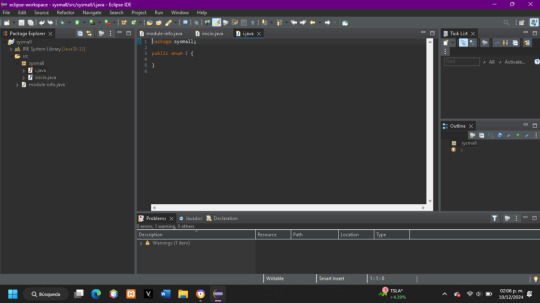
IntelliJ IDEA: Es otro entorno de desarrollo integrado (IDE) muy popular, al igual que Eclipse. Es conocido por ser una herramienta extremadamente potente y con una interfaz muy intuitiva, especialmente diseñada para mejorar la productividad de los programadores.

Visual Studio: es un entorno de desarrollo integrado (IDE) muy popular y completo, desarrollado por Microsoft. Se utiliza principalmente para crear aplicaciones de escritorio, web y móviles, utilizando una amplia variedad de lenguajes de programación.

PyCharm: Diseñado específicamente para el lenguaje de programación Python. Desarrollado por JetBrains, una empresa reconocida por crear herramientas de desarrollo de alta calidad, PyCharm se ha convertido en uno de los IDE más populares entre los programadores Python a tal grado que algunos los consideran el IDE de Python por excelencia. Su interfaz intuitiva y sus herramientas avanzadas lo hacen ideal tanto para principiantes como para desarrolladores experimentados.
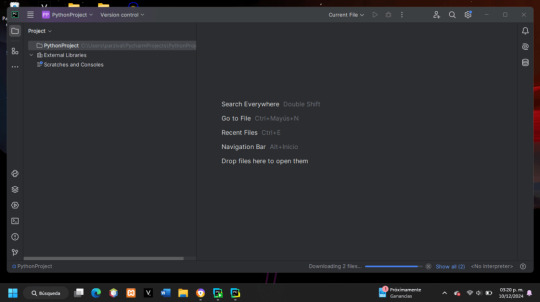
NeatBeans: NeatBeans es un IDE que se puede ejecutar tanto en java tanto en C++ y HTML, un IDE extenso por el cual puedes desarrollar tanto paneles de sesión tanto algunas ventanas de contraseñas o menús, este puede ser usado de una forma menos complicada ya que sus interacciones son mas graficas que lineales .Al igual que PyCharm, ofrece un conjunto de herramientas y características diseñadas para simplificar el proceso de desarrollo de software.
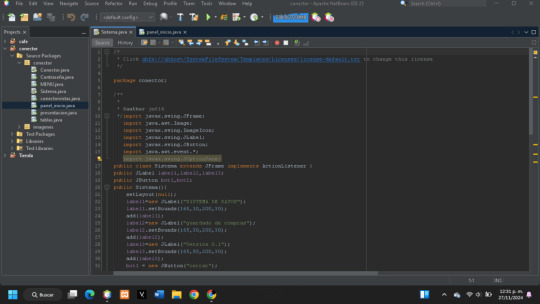
Read the full article
#acción#clase#Colaboracion#compu#condición#diagramas#Diseña#diseños#EntornodeDesarrolloIntegrado#GitHub#GitLab#innovacion#innovaciones#IntegratedDevelopmentEnvironment#Lucidchart#NeatBeans#POO#Productos#programas#QuickType#sistemasdeinformacion#software#tecnologia#Total
0 notes
Text
Don’t know if this helps, but diagram making websites like Lucidchart can work, if you use the shapes and so to make rooms and stuff.
Otherwise, for more detailed inside decor you can use floor plan making websites? Like when you plan for a new house/new layout of furniture etc.
For making general maps, I think Lucidchart is decent.
we need innerworld mapping websites/apps that we can describe places and link together in
If you know any, please tell us
#Lucidchart#mapping#inner world#innerworld mapping#did osdd#osdd#osdd system#system#alters#plural#osdd community
65 notes
·
View notes
Text
Networking and overcoming introversion led to a key business discovery: the power of systems and processes. Learn how mapping workflows can streamline operations, reduce bottlenecks, and optimize your business for success.
#auditing workflows#automating small business tasks#business bottlenecks#business productivity tools#business workflows#client onboarding processes#creating business systems#effective processes for small business#entrepreneur networking#improving business systems#LucidChart for businesses#mapping workflows#onboarding workflows#process automation#Process Street workflow#reducing bottlenecks in business#sales workflow audit#small business optimization#small business systems#systemizing business operations#systems and processes#visual roadmap for business#workflow audit tips#workflow mapping tools#workflow optimization
0 notes
Text
I think bible should rhyme with nibble
bibble bibble bibble
0 notes
Text
Free Websites / Tools that I use for Writing ! !
Organizational:
Notion : a personal favourite of mine. from what i've seen, unlimited projects with a variety of cards to use. it also has an mobile app with it. highly recommend.
Milanote : has some limitations on how many cards you can have but has different templates you can tinker around with. is more of a whiteboard type of site.
Hiveword : i haven't used it but it provides a novel-building template for plot, scenes, characters, etc.
Lucidchart : another i don't use but from what I've seen, it's similar to Milanote with their whiteboard style. also has a variety of templates of charts, diagrams, and more!
Helpful Tools:
OneLook Thesaurus : my go-to website for finding synonyms. also provides definitions!
Language Tool : a chrome extension similar to Grammarly that acts as a grammar-aid tool.
Character Creation / World Building:
Pinterest : a great source if you're searching for inspiration. you can also find tips and prompts on the site too!
Reedsy Character Name Generator : a name generator that include forename and surnames. has nationality specific names and a few mythic / fantasy name generators.
Fantasy Name Generator : this name generator has much more variety with character names and fictional location titles.
Inkarnate : a fantasy world-building site that I used in the past. fun fact: i made a little (it wasn't little) dragon shaped island for one story that never made it on paper.
3K notes
·
View notes
Text
Okay so I'm cooking for RenPlat stuff (I'll absolutely be streaming this weekend, probably Saturday but maybe Sunday!!!) and I'm more and more compelled to start making flowcharts of my battle plans instead of just text documents
I usually use lucidchart, but I'd prefer something that lets me run and save things locally that's open source and runs on Ubuntu. Anyone have any recommendations? I'll also probably use it for what I usually use flowcharts for, which is diagraming out bioinformatics pipelines, so if there's any nifty features that might be helpful there that would be cool.
12 notes
·
View notes
Text
23 notes
·
View notes
Text
logged into my old lucidchart account so my friend and i could update The Web which we haven't updated since spring semester 2024 but they wanna do their readings instead </3
4 notes
·
View notes
Text
me making my 507th set of relational schemas, dependency diagrams & crow's foot ERDs in the same goddamn lucidchart document that now takes a full 3 minutes to load

2 notes
·
View notes
Text
I finally decide to plan my visual novel and use a diagram so I know what how the game will flow. I used Lucidchart (Android app) and enjoyed it very much, bad idea. I got to the 60 object limit, and I didn't know that it had a limit so I got confused. Once I figured it out I went into a frenzy of sadness, disappointment and rage.
Please give me alternatives that have the same feel as Lucidchart for android. As long as it functions on Android, I don't care if it's web or app. Please, I need help 😭 (Apk links are also much appreciated)
2 notes
·
View notes
Text
visualize your Neal Caffrey, with Lucidchart
:)
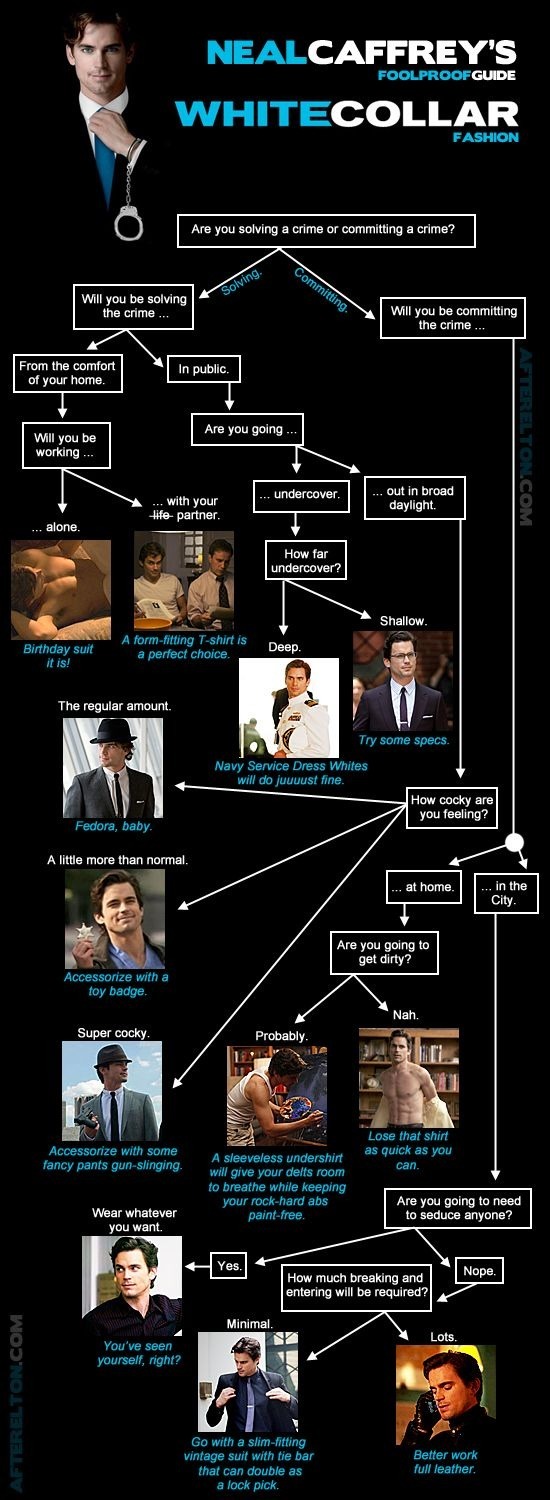
The Neal Caffrey flow chart is always important.
1K notes
·
View notes
Text
Building a Home Lab for CCIE Preparation on a Budget
Preparing for the Cisco Certified Internetwork Expert (CCIE) exam is a serious undertaking, requiring extensive theoretical knowledge and, more importantly, hands-on experience. While ccie certification tracks — including Enterprise Infrastructure, Security, Data Center, and others — are known for their complexity, one thing is consistent across all of them: lab practice is critical.
For many aspiring CCIE candidates, access to professional lab equipment and commercial training platforms can be expensive. But with the right strategy and tools, you can build an effective home lab setup without breaking the bank. This guide walks you through how to build a powerful CCIE home lab on a budget in 2025.
Step 1: Choose the Right CCIE Track First
Before purchasing anything, determine which CCIE track you're pursuing — Enterprise Infrastructure, Security, Service Provider, Data Center, etc. Each track has different hardware and software requirements.

For instance:
Enterprise Infrastructure focuses heavily on routing, switching, and automation.
Security involves firewalls, VPNs, and Cisco ISE.
Data Center may require Nexus switching and UCS simulation.
Knowing your target track helps you avoid wasting money on unnecessary tools or hardware.
Step 2: Use Virtualization and Emulators
One of the most cost-effective ways to build your lab is through virtualization platforms. Here are the most popular and budget-friendly solutions:
✅ EVE-NG (Emulated Virtual Environment - Next Generation)
Supports complex multi-vendor topologies
Integrates Cisco images for routers, switches, firewalls, and more
Browser-based GUI, perfect for remote access and portability
✅ Cisco VIRL (Virtual Internet Routing Lab) / CML
Cisco’s official emulator with pre-built topologies
Access to genuine Cisco virtual images
Annual subscription required (cheaper than buying physical gear)
✅ GNS3 (Graphical Network Simulator)
Free and community-supported
Ideal for routing and switching labs
Supports integration with real devices and VMs
Using virtualization allows you to replicate nearly all exam scenarios at a fraction of the cost of physical equipment.
Step 3: Source Cisco Images Legally
You’ll need Cisco IOS, IOS-XE, ASA, NX-OS, and other virtual images depending on your track. You can access these legally via:
Cisco Learning Network (with an active account or subscription)
Cisco CML license which includes official images
Corporate access if your workplace is a Cisco partner
Never rely on pirated software — not only is it illegal, but it can also introduce bugs or compatibility issues.
Step 4: Use Affordable Hardware When Necessary
While virtual labs cover most scenarios, some CCIE candidates still prefer or require physical gear for real-world feel or specific testing features.
Instead of buying new, consider:
Used Cisco gear on eBay or local resellers (models like Cisco 3560, 3750, ISR 2900 series are budget-friendly)
Lab bundles from vendors specializing in CCIE kits
Renting lab time via platforms like INE or third-party virtual labs when needed
Tip: If going physical, make sure you have enough power supply, rack space, and cooling in your home setup.
Step 5: Build Your PC for Virtual Labs
Your virtualization setup will need a capable computer. A mid-range or refurbished desktop or laptop can work perfectly if it meets these specs:
CPU: Intel i7 or AMD Ryzen 7 (multi-core)
RAM: At least 32GB (64GB preferred)
Storage: SSD with 1TB capacity or more
Network Interfaces: One or more Ethernet ports for bridging virtual and physical networks
Invest in a good machine — it’s the backbone of your virtual lab.
Step 6: Organize and Document Your Labs
Use tools like:
Draw.io or Lucidchart for network diagrams
Notion, Obsidian, or OneNote to take structured notes
GitHub to store scripts and automation configurations
Having a well-documented lab will help during revision and when simulating full mock exams.
Final Thoughts
Building a home lab for CCIE preparation doesn’t have to drain your bank account. With smart choices — leveraging virtualization, buying used hardware, and using open-source tools — you can create a powerful and flexible lab environment that fully supports your CCIE journey.
Remember, the goal isn’t to have the flashiest setup — it’s to replicate the scenarios and develop the skills needed to pass the CCIE Lab. With focus, consistency, and the right home lab, you’ll be well on your way to earning your CCIE certification without financial strain.
0 notes
Text
تجزیه و تحلیل تجربه مشتری در فروشگاه: کلید فروش پایدار
مقدمه
در دنیای رقابتی امروز، محصول یا قیمت مناسب دیگر برای موفقیت کافی نیست. آنچه مشتری را نگه میدارد یا حتی تبدیل به مدافع برند میکند، تجربهای است که در فروشگاه از برند دریافت میکند. درک، ارزیابی و بهینهسازی این تجربه، از طریق تجزیه و تحلیل تجربه مشتری در فروشگاه (Customer Experience Analysis) امکانپذیر است.
۱. تجربه مشتری در فروشگاه چیست؟
تجربه مشتری (Customer Experience یا CX) به همه تعاملاتی گفته میشود که مشتری با فروشگاه شما دارد – از لحظه ورود تا زمان پرداخت یا حتی ��عد از خرید. در فروشگاه فیزیکی، این تجربه شامل:
خوشآمدگویی و برخورد کارکنان
چیدمان فروشگاه و دسترسیپذیری
نحوه ارائه محصولات
سیستم نوبتدهی، صندوق، برگشت کالا
موسیقی، نورپردازی و تمیزی فضا
رضایت از خدمات پس از فروش
📌 منبع: Forrester – What Is Customer Experience?
۲. چرا تحلیل تجربه مشتری مهم است؟
✅ افزایش نرخ بازگشت مشتری: مشتری راضی احتمال بیشتری دارد که مجدد خرید کند.
✅ افزایش فروش از طریق توصیه دهانبهدهان: ۸۶٪ مشتریان تجربه خوب خود را با دیگران به اشتراک میگذارند (منبع: PWC)
✅ درک دقیق نقاط ضعف فرآیند فروش: تحلیل تجربه مشتری کمک میکند بفهمیم در کجای سفر مشتری، رضایت افت میکند.
✅ تمایز از رقبا: در بازار اشباع، تجربه متفاوت و انسانی میتواند مزیت رقابتی باشد.
۳. مراحل تجزیه و تحلیل تجربه مشتری
۱. نقشهبرداری سفر مشتری (Customer Journey Mapping)
نمایش تصویری از تمام مراحل تعامل مشتری با فروشگاه مثال: ورود > گشتوگذار > پرسش از فروشنده > تصمیمگیری > پرداخت > دریافت فاکتور
ابزارها:
Lucidchart
Smaply
UXPressia
۲. جمعآوری داده از تعاملات مشتری
نظرسنجی حضوری یا QR کد
نظر در صندوق پیشنهادات
فیلمبرداری از رفتار در فروشگاه (با رعایت حریم خصوصی)
مصاحبه کوتاه بعد از خرید
بازخوردهای آنلاین (نظرات در Google، Instagram)
۳. تحلیل نقاط تماس (Touchpoints)
در هر نقطه تماس (ورود، پرسیدن سوال، صندوق)، ارزیابی کنید:
آیا مشتری راحت بود؟
چه احساسی داشت؟
آیا زمان انتظار زیاد بود؟
📌 مرجع: Qualtrics – Customer Journey Analysis
۴. تجزیه و تحلیل احساسات مشتری (Sentiment Analysis)
با تحلیل کلمات و رفتار مشتری، احساسات مثبت، منفی یا خنثی را تشخیص دهید. در فروشگاه میتوان با کد رنگی در نظرسنجی یا چهرهخوانی هوش مصنوعی استفاده کرد.
۵. تبدیل داده به بینش عملیاتی
مثال:
داده: "۸۰٪ مشتریان از پیدا نکردن سایز شکایت دارند"
اقدام: "طراحی بخش سایزبندی با راهنمای نصبشده در محل"
۴. شاخصهای کلیدی تجربه مشتری در فروشگاه
شاخصتوضیحCSAT (رضایت مشتری)امتیاز ۱ تا ۵ پس از خرید از رضایت کلیNPS (امتیاز خالص ترویجکننده)آیا مشتری فروشگاه را به دیگران توصیه میکند؟زمان انتظار در صفهر دقیقه اضافی میتواند نارضایتی ایجاد کندنرخ بازگشت مشتری (Retention Rate)چند درصد از خریداران بازمیگردند؟ارزش متوسط سبد خرید (AOV)ارتباط مستقیم با راحتی و تجربه خرید
📌 مرجع: Zendesk – CX Metrics
۵. عوامل مؤثر بر تجربه مشتری در فروشگاه
برخورد کارکنان بر اساس گزارش Deloitte، بیش از 60٪ تجربه مشتری به نحوه برخورد پرسنل بستگی دارد.
دسترسی آسان به کالا قفسههای نامنظم یا چیدمان گیجکننده میتواند تجربه مشتری را خراب کند.
فضای احساسی فروشگاه موسیقی، نور، دما و حتی بوی محیط تأثیر زیادی دارند.
فنّاوریهای کمکی استفاده از راهنمای دیجیتال، ترمینالهای خودپرداخت، یا اسکن سریع میتواند تجربه را ارتقاء دهد.
فرآیند بازگشت کالا شفاف و سریع بودن این فرآیند، حس اعتماد ایجاد میکند.
۶. ابزارهای تحلیل تجربه مشتری در فروشگاه
ابزارعملکردMedalliaجمعآوری و تحلیل لحظهای بازخورد مشتریQualtricsتحلیل دادههای نظرسنجی و احساساتRetailNextتحلیل ترافیک و مسیر حرکت در فروشگاهHappyOrNotدستگاههای فیزیکی نظرسنجی با دکمههای لبخند/ناراحتPeople Counting Sensorsشمارش ورود و خروج برای ارزیابی بازده فروشگاه
۷. نمونههای موفق از بهبود تجربه مشتری
🛒 IKEA
با طراحی مسیر مشخص در فروشگاه، چیدمان مینیمالیستی و امکان لمس محصولات، تجربه خرید لذتبخشی ایجاد کردهاند.
👟 Nike Store
در برخی شعب، خریداران میتوانند کفش را در زمین مجازی تست کنند؛ ترکیب تکنولوژی و تجربه.
🧥 Zara
با تحلیل مسیر حرکت مشتری در فروشگاه، چیدمان قفسهها را طوری طراحی کرده که مشتریها بیشترین تعامل را با اجناس جدید داشته باشند.
📌 مرجع: Think with Google – Retail Experience
۸. چالشها در تجزیه و تحلیل تجربه مشتری
چالشراهحلمشتری بازخورد نمیدهدسادهسازی فرمها، مشوق کوچک مثل قرعهکشیکارکنان آموزش ندیدهاندبرگزاری کارگاههای رفتاری و فروش تعاملیدادهها فقط جمعآوری میشوندایجاد داشبورد برای پیگیری KPI و اقدام اصلاحی
۹. روندهای جدید در تجربه مشتری
تجربه ترکیبی (Phygital): ترکیب فیزیکی + دیجیتال برای ارتقاء تعامل
هوش مصنوعی ��ر تحلیل چهره مشتریان
ارائه پیشنهاد شخصیسازیشده بر اساس تاریخچه خرید
استفاده از AR برای دیدن محصول در محیط واقعی (مثلاً لباس روی بدن یا مبل در خانه)
۱۰. جمعبندی
تجربه مشتری در فروشگاه فقط یک حس نیست؛ یک داده قابل اندازهگیری و بهبود است. با تحلیل دقیق آن میتوان نرخ فروش، وفاداری مشتری و تمایز برند را بهصورت چشمگیری افزایش داد. فروشگاههایی که به تجربه مشتری توجه دارند، نهتنها میفروشند، بلکه به یادگار میمانند.
0 notes
Text
How Recruiters View Business Analyst Certification in 2025

Introduction
In today’s fast-paced digital economy, data drives decisions. Businesses rely on professionals who can turn raw information into actionable insights. That’s where business analysts come in.
But there’s a catch.
In 2025, competition for business analyst roles is fiercer than ever. With the rise in remote work, global job applications, and AI-powered tools, hiring managers now have higher expectations. It’s no longer enough to say you understand business analysis, you need to prove it with certifications for business analysts that demonstrate your skills and hands-on experience.
This is why business analyst certification – live projects has gained so much attention. It bridges the gap between theory and practical application. Recruiters want certified candidates who’ve done real work, collaborated with stakeholders, solved actual business problems, and can step into a role with minimal hand-holding.
Let’s dive deep into how recruiters evaluate business analyst certifications in 2025 and what they really look for in a certified candidate.
The Evolving Role of a Business Analyst in 2025
From Reporters to Strategic Partners
In 2025, business analysts are more than just requirement gatherers. They’re product advisors, strategy enablers, and digital transformation catalysts.
Top trends influencing the BA role in 2025 include:
Increased adoption of AI and automation tools.
Focus on data-driven decision-making.
Demand for cross-functional collaboration.
Use of Agile and Scrum in non-technical projects.
As a result, recruiters now look for candidates who bring a mix of analytical thinking, domain knowledge, technical proficiency, and soft skills.
How Recruiters Shortlist Certified Candidates
Recruiters use a blend of automated tools (ATS systems) and manual screening. In most cases, a certification helps your resume get shortlisted but only if it’s credible and relevant.
Here’s how a recruiter typically evaluates a certification:
Factor
Recruiter Perspective
Relevance
Does it match the job description?
Practical Exposure
Are live projects included?
Skill Development
Does the program teach current tools like Jira, Tableau, SQL?
Industry Recognition
Is the certification known and respected?
Application Readiness
Will this candidate need training or are they job-ready?
Why Practical Exposure from Live Projects Sets You Apart
Recruiters repeatedly emphasize this: real-world experience is the most valuable part of a certification.
Business analyst certification – live projects simulate real business scenarios, giving you the chance to:
Conduct stakeholder interviews
Create business requirement documents (BRDs)
Use tools like Jira, Confluence, MS Visio, Power BI
Facilitate backlog grooming sessions
Analyze KPIs and define success metrics
These activities mirror what BAs actually do on the job which is exactly what recruiters want to see.
Real-World Example: One candidate used live project experience to demonstrate how they optimized an e-commerce platform’s checkout flow, increasing conversion by 12%. That single project won them the job over three other applicants.
Top Business Analyst Skills Recruiters Seek
Certification is the first filter. But skills are what seal the deal.
Here’s what hiring managers expect from a certified business analyst in 2025:
Technical Skills
SQL & database querying
Data visualization (Tableau/Power BI)
Wireframing tools (Balsamiq, Lucidchart)
Workflow documentation
Business Skills
Requirements gathering
Business process modeling
Functional specifications
Stakeholder communication
Soft Skills
Critical thinking
Empathy
Communication
Collaboration across departments
Live projects help you build all three categories, making your resume stronger and your interview pitch sharper.
The Impact of Certification on Salary and Job Prospects
Industry Statistics (2025):
Business analysts with business analyst certification online and project experience earn 22% more than uncertified peers.
78% of hiring managers say practical project exposure is more important than the brand of business analyst certification online.
Recruiters are 2.3x more likely to interview candidates who’ve done real-time use cases as part of their business analyst certification online training.
Sample Roles for Certified Analysts:
Junior Business Analyst (Entry-Level)
Agile Business Analyst
Functional Analyst
Product Analyst
Business Systems Analyst
What a Good Certification Program Includes
Not all certifications are equal. Recruiters know the difference.
When assessing your certificate, they look for:
Live Projects: At least 2-3 full-length business cases.
Tools Mastery: Jira, Excel, SQL, Tableau, Visio, Agile boards.
Documentation Practice: BRD, FRD, Use Case diagrams.
Soft Skill Development: Presentation, negotiation, stakeholder engagement.
Capstone Project: A final project that ties everything together.
If your certification includes these elements, it signals job-readiness.
Case Studies: Real Recruiter Perspectives
Case Study 1: Entry-Level Analyst Hire
Role: Junior BA at a fintech startup Candidate A: MBA graduate, no real-world experience Candidate B: Undergrad, but completed a business analyst certification – live projects
Outcome: Candidate B got the job because they had completed 3 real use cases involving customer onboarding workflows and data analysis.
“We need people who can jump in and contribute on day one. The fact that they had already worked with tools and written BRDs gave us confidence.” — HR Manager, Fintech Startup
Case Study 2: Lateral Hire in Insurance
Role: Business Systems Analyst Candidate C: 5 years in support role, did a certification with mock projects Candidate D: 3 years in operations, completed certification with live projects
Outcome: Candidate D was hired because of direct experience working on a live insurance claims workflow simulation.
“The live projects made a huge difference. It wasn’t theory they had experience tackling real data and stakeholder issues.” Sr. Recruiter, Insurance Domain
Common Mistakes Candidates Make
Even with a certification, many candidates fall short because of these errors:
Relying on the certificate alone – not preparing a strong resume or project portfolio.
Inability to explain project work – recruiters want clarity and confidence.
Focusing only on theory – neglecting tools, processes, or Agile workflows.
Not customizing resumes – failing to align certification learnings with the job description.
If you’re certified, make sure your LinkedIn profile, resume, and elevator pitch reflect your live project experience clearly.
Key Takeaways
In 2025, recruiters prioritize practical experience over theoretical knowledge. A business analyst certification – live projects format signals job-readiness. Tools, documentation, stakeholder communication, and Agile workflows are essential. Recruiters value clarity, confidence, and real-world application in interviews. Your certification should come with a strong portfolio and hands-on use cases.
Conclusion
In 2025, having a business analyst certification isn’t enough. Recruiters want proof you can do the job.
Choose certification programs that offer live projects and help you develop tools, processes, and communication skills. That’s what sets you apart.Ready to become recruiter-ready? Start building real-world business analyst skills today.Stand out. Get certified. Prove you’re job-ready.
0 notes
Text
Want Better Conversions? Tap Into These Customer Experience Consulting Services Strategies
If your traffic is high but your conversion rate is low, it's time to look beyond traditional marketing tactics. While many brands focus heavily on advertising and lead generation, they often overlook the most critical factor that influences conversions, the customer experience.
This is where customer experience consulting services play a vital role. These expert-led services help brands optimize every customer interaction, from first click to final purchase, in ways that directly influence buying decisions. High-performing CX strategy consulting companies are not just solving customer problems; they’re boosting business performance through well-crafted experience strategies that drive measurable results.
So, how exactly do these firms help businesses convert more leads into loyal customers? Let’s explore the most impactful strategies used by customer experience experts today.
1. Customer Journey Mapping That Eliminates Friction
One of the core strengths of CX strategy consulting companies is journey mapping. This process involves visualizing every touchpoint a customer has with your brand, from social media engagement to product browsing and post-sale support.
By identifying where customers drop off, feel confused, or lose trust, consultants create targeted strategies to eliminate those pain points. When the path to purchase becomes seamless and intuitive, conversion rates naturally improve.
Key tools used: UXPressia, Smaply, Lucidchart
2. Personalization at Scale
Generic messaging is one of the biggest barriers to conversion. Customers want to feel understood. That’s why customer experience consulting services work with brands to implement personalization engines that tailor offers, content, and product recommendations based on user behavior and preferences.
This strategy significantly improves relevance, which in turn increases engagement and sales. According to research, personalized experiences can lift conversion rates by up to 20 percent or more.
Related solutions: Segment, Dynamic Yield, BlueConic
3. Speeding Up the Path to Purchase
Delays in response, confusing checkout processes, or long onboarding times can kill conversions. CX strategy consulting companies help businesses streamline every part of the purchase journey. From optimizing website speed and reducing form fields to automating customer support via live chat, they ensure nothing slows your customer down.
Key focus areas:
Page load speed
Mobile-first experiences
Simplified UX design
Instant chat or chatbot integration
4. Emotional Engagement and Trust Building
Great experiences are not just efficient, they’re memorable and emotional. Customer experience consulting services understand that buying decisions are driven by trust, emotion, and perceived value. That’s why they help brands develop tone of voice guidelines, empathy-driven messaging, and emotionally resonant visual storytelling.
Customers are more likely to convert when they feel connected to a brand’s values and messaging.
Tactics include:
Authentic storytelling
Social proof integration
Empathy-focused training for front-line teams
5. Feedback Loops for Continuous Optimization
To improve conversions, businesses must listen closely to what customers are saying. Top CX strategy consulting companies implement robust feedback mechanisms across digital and physical channels. They collect voice-of-customer data, interpret sentiment trends, and feed those insights back into strategy and UX design.
By reacting quickly to what users want and don’t want, businesses can adapt their offers, refine messaging, and reduce the hesitation that causes cart abandonment or form drop-offs.
Tools used: Medallia, Qualtrics, Hotjar, Typeform
6. Aligning Teams with a Customer-First Culture
Conversion optimization isn’t just about technology or design. It’s also about mindset. Leading customer experience consulting services help brands establish a customer-first culture by aligning marketing, sales, service, and product teams around shared CX goals.
When everyone understands how their role affects the customer experience, the entire company becomes more responsive, agile, and conversion-focused.
7. Leveraging Data to Personalize and Predict Behavior
By integrating customer data platforms (CDPs) and CRM tools, CX consultants empower businesses to understand user behavior in real time. They use this data to trigger personalized messaging, abandoned cart recovery emails, and timely recommendations, all of which nudge users toward conversion.
Popular integrations:
Salesforce
HubSpot
Klaviyo
Tealium
8. Post-Conversion Experience to Drive Loyalty
The experience doesn’t end after the first purchase. Successful conversion optimization strategies also focus on what happens next. From thank-you pages to onboarding sequences and loyalty programs, customer experience consulting services help brands turn one-time buyers into repeat customers.
A seamless post-purchase journey leads to more upsells, cross-sells, and referrals, multiplying the value of each conversion.
Final Thoughts
The road to better conversions starts with better experiences. By partnering with experienced CX strategy consulting companies, businesses can eliminate friction, personalize interactions, and build long-term customer trust, all of which directly contribute to higher conversion rates and stronger revenue growth.
Customer experience consulting services are no longer just a nice-to-have. They are a revenue-driving necessity in today’s competitive market. If you want to boost conversions in a sustainable, customer-centric way, these strategies will put you ahead of the curve.
#customer experience consulting services#CX strategy consulting companies#conversion rate optimization#customer journey mapping#personalization strategies#customer trust#feedback analytics#customer retention#digital experience optimization#customer satisfaction#post-purchase engagement#customer loyalty strategies
0 notes
Text
3 notes
·
View notes